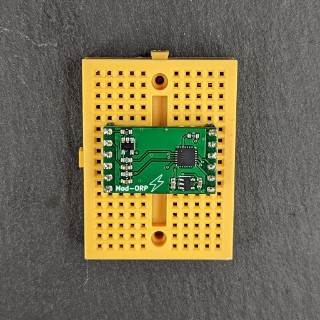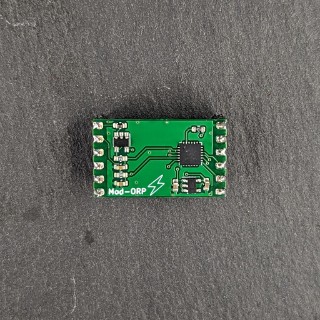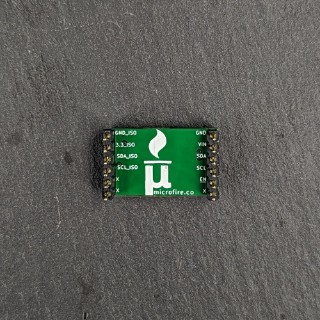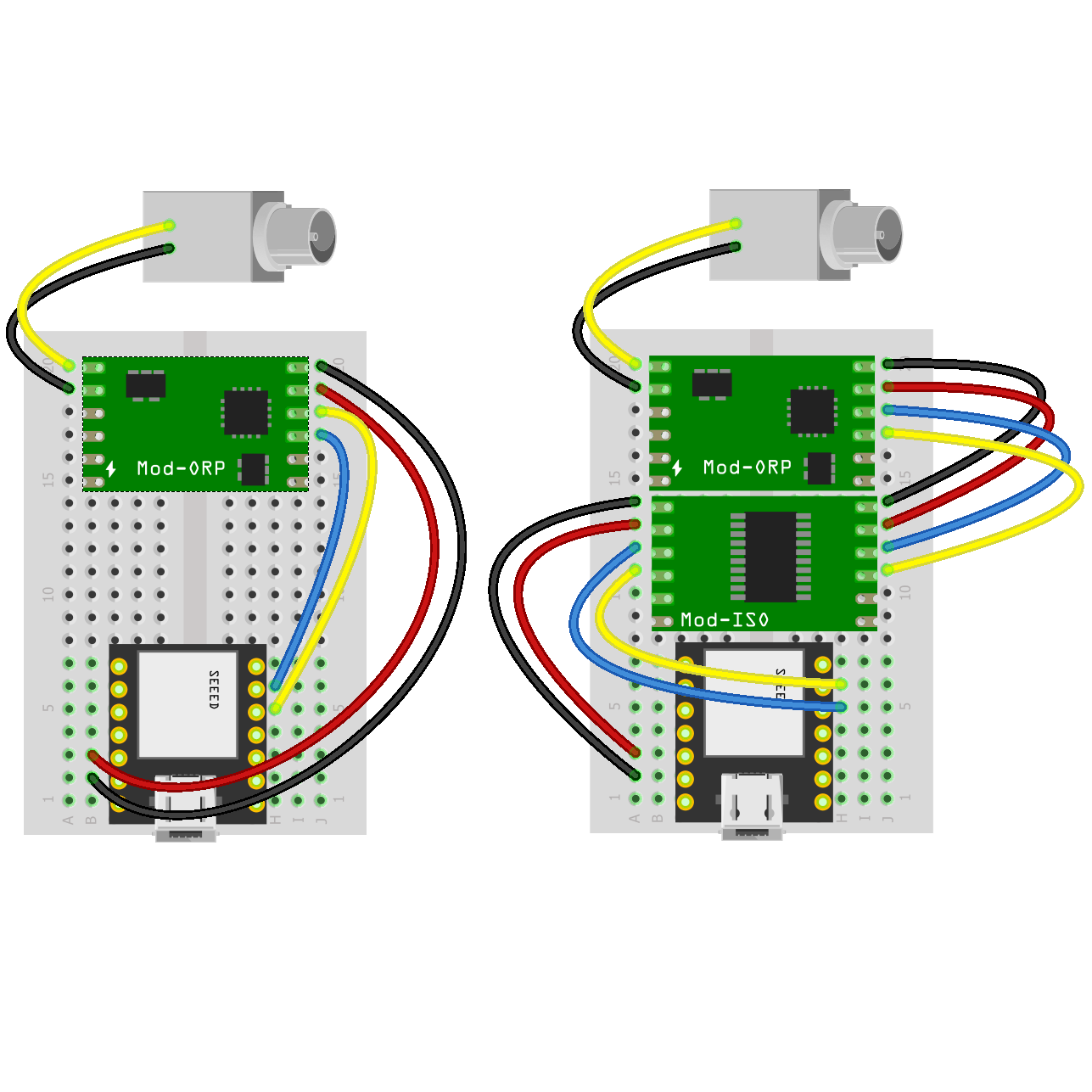⚡ Mod-ORP
🔰 Easy
Easy I2C interface, simple API, minimal technical knowledge required
Code
-
1#include <Microfire_Mod-ORP.h>2Microfire::Mod_ORP::i2c orp;3void setup() {4Serial.begin(9600);5Wire.begin();6orp.begin();7}89void loop() {10orp.measureORP();11Serial.println((String) orp.mV + " mV");12delay(1000);13}
Read more here -
1# import the component2external_components:3- source:4type: git5url: https://github.com/u-fire/ESPHomeComponents/67sensor:8- platform: mod_orp9name: orp
Read more here
Other stuff you'll need
This is just the module. You could...
- Use it in a breadboard. To do that, you'll need to connect the I2C bus and probe connections using point-to-point wiring or something similar.
- Use it in a Carrier Board for an easier-to-use solution than breadboards.
- Use it on a custom board and attach it either by pins or castellation.
You'll need an ORP probe:
Mod-ISO will minimize cross-probe and environmental interference.



